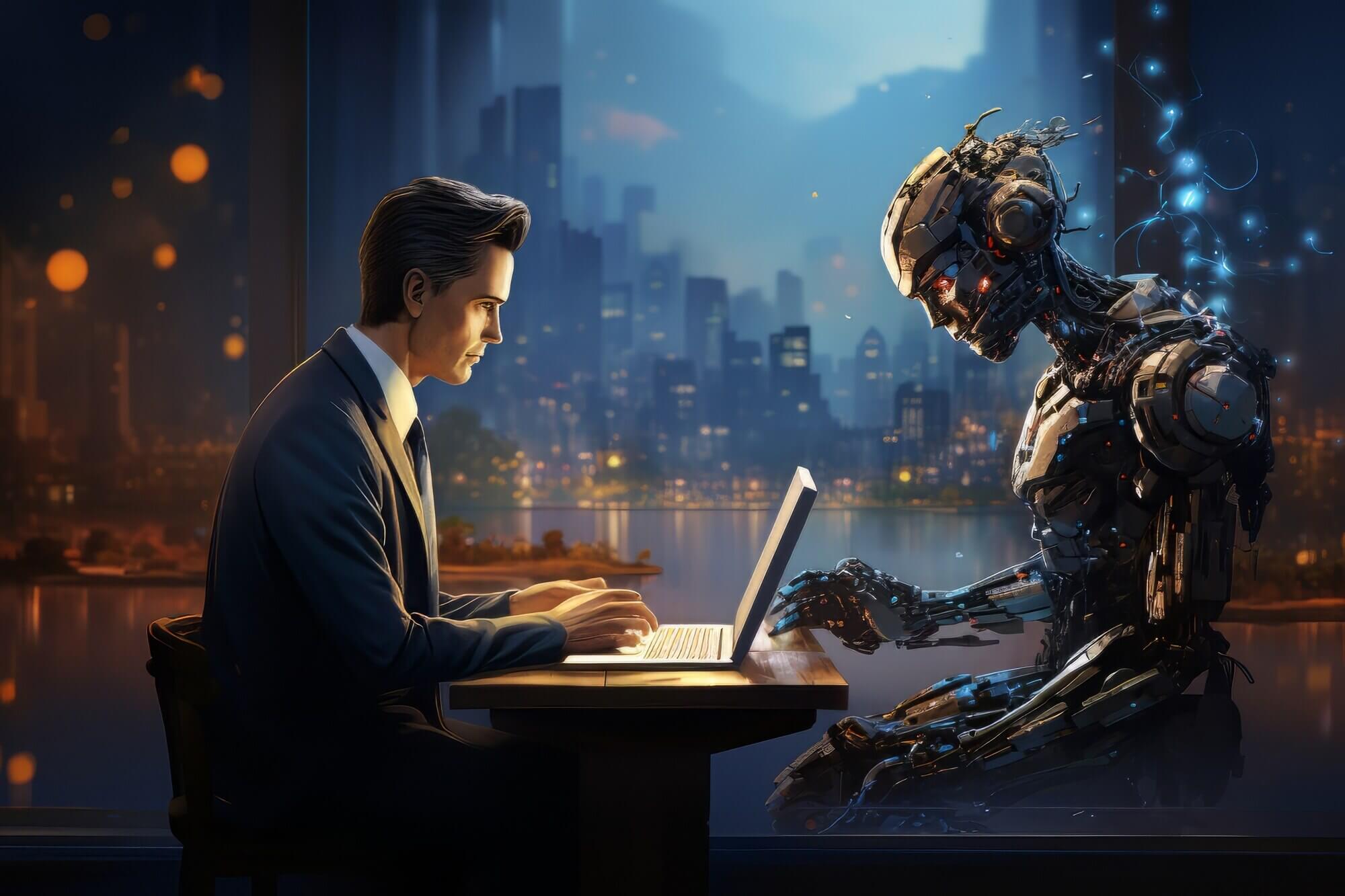Table of Contents
Autonomous AI Agents: A Deep Dive into the Future of AI
Autonomous AI agents are becoming a big deal in the world of artificial intelligence (AI). These advanced systems are way cooler than traditional AI because they can do tasks on their own, adapt to new situations, and make decisions without needing much help from humans. This article takes a deep dive into the world of autonomous AI agents, exploring what they can and can’t do, how they might be used, ethical concerns, and what the future holds.
What are Autonomous AI Agents?
Autonomous AI agents are like super smart AI systems that can do tasks on their own. They can learn and adapt to their surroundings and make decisions to reach a specific goal2. Unlike traditional AI, which needs specific instructions for every action, autonomous agents operate based on predefined goals, with minimal human oversight3. They’re systems that use large language models with memory and tools to perform multi-step tasks independently4. When given an objective, they can generate tasks for themselves, complete assigned tasks, and work on the next one, until the objective is complete5. Companies use AI agents to achieve specific goals and more efficient business outcomes6.
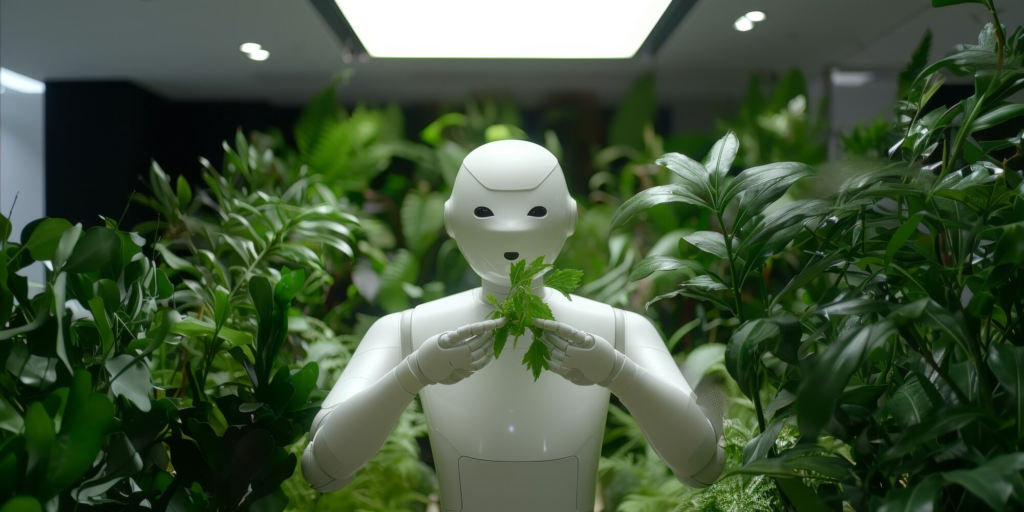
An artificial intelligence (AI) agent is basically a system or program that can automatically perform tasks for a user or another system by designing its workflow and utilizing available tools7. AI agents can do a lot of things beyond natural language processing, including decision-making, problem-solving, interacting with external environments, and executing actions7.
It’s important to know the difference between autonomous agents and foundation models. Autonomous agents are designed to act independently, making decisions and taking actions based on how they perceive the environment and their goals. They can be reactive or adaptive, depending on how complex the agent is4. On the other hand, foundation models, like large language models, are pre-trained on huge datasets and provide general knowledge or capabilities that can be fine-tuned for specific tasks. While autonomous agents are goal-driven and focused on performing actions, foundation models are used to generate text, translate languages, and write different kinds of creative content.
At their core, autonomous agents combine key capabilities:
- Sensing: Gathering information from their environment or user inputs.
- Processing: Analyzing data using algorithms and memory.
- Acting: Executing tasks aligned with predefined goals.
Types of Autonomous AI Agents
Autonomous AI agents can be pretty simple or super complex, and their decision-making skills vary a lot. We can roughly categorize them into three main types: reactive, deliberative, and hybrid.

- Reactive agents are like robots following a script. They see what’s happening around them and react based on preset rules. They don’t have memory and can’t think about the past or future. Their actions are all about the here and now. These agents are good for tasks with clear rules and predictable situations.
- Deliberative agents are more like planners. They have an internal picture of the world and can think about past, present, and future. They have memory and can plan and strategize to reach their goals. These agents think about different actions and what might happen before choosing the best way to go. Deliberative agents can handle complex and changing situations where things are uncertain and information is incomplete. But, their decision-making can take a lot of time and computing power.
- Hybrid agents are a mix of reactive and deliberative. They have quick reactions for immediate situations and can also plan for the long term. Hybrid agents can change their decision-making based on the situation and available info. This flexibility helps them work well in lots of different environments and tasks.
The choice of agent type depends on the specific requirements of the application, the complexity of the environment, and the desired level of autonomy. Reactive agents are suitable for simple and predictable tasks, while deliberative agents are better suited for complex and dynamic environments. Hybrid agents offer a balance between reactivity and deliberation, making them adaptable to various situations.
| Agent Type | Memory | Decision Making | Learning Capability | Processing Speed | Use Cases |
|---|---|---|---|---|---|
| Reactive Agents | No internal state | Immediate response based on current input | Limited to pre-programmed responses | Very fast (simple reactions) | Simple games, basic automation |
| Deliberative Agents | Maintains internal state | Plans ahead using internal model | Can learn and adapt over time | Slower (needs time to plan) | Complex simulations, strategic planning |
| Hybrid Agents | Both reactive and deliberative capabilities | Can switch between reactive and planned responses | Comprehensive learning across multiple modes | Variable depending on situation | Adaptive systems requiring both speed and planning |
A Brief History of Autonomous AI Agents
People have been researching autonomous agents in academia and industry for a long time. Early research mostly focused on training agents with limited knowledge in isolated environments. But, with the recent rise of large language models (LLMs) and their ability to learn a ton from the web, there’s been a surge in research on LLM-based autonomous agents. These LLMs have shown they could be as smart as humans, making them a promising way to achieve artificial general intelligence (AGI).
Research Papers on Autonomous AI Agents
Several research papers delve into the intricacies of autonomous AI agents, exploring their theoretical foundations, practical applications, and potential impact. This section summarizes some notable research in the field:
- “Artificial Intelligence and Virtual Worlds – Toward Human-Level AI Agents“: This paper explores how AI agents could become as smart as humans in virtual worlds. It looks at the challenges and possibilities in creating agents that can interact with complex environments and act like humans.
- “Intelligent Agents: Theory and Practice“: This paper gives a complete overview of intelligent agent theory and its real-world uses. It talks about different agent structures, learning algorithms, and decision-making strategies.
- “TPTU: Task Planning and Tool Usage of Large Language Model-based AI Agents“: This research focuses on how well large language model-based AI agents can plan tasks and use tools effectively. It highlights how important these skills are for autonomous agents to work in real-world situations.
- “A Survey on Context-Aware Multi-Agent Systems: Techniques, Challenges and Future Directions“: This paper looks at context-aware multi-agent systems, where agents can understand and react to their environment. It emphasizes how important context is in enabling agents to work together effectively.
- “Agent AI: Surveying the Horizons of Multimodal Interaction“: This research explores the potential of AI agents to interact with humans and their environment in multiple ways, like through natural language, vision, and gestures. It highlights the importance of multimodal interaction for creating more human-like and versatile agents.
- “Large Language Model-Based Multi-Agents: A Survey of Progress and Challenges“: This paper gives a complete survey of recent progress and challenges in developing large language model-based multi-agent systems. It talks about different structures, training methods, and evaluation metrics.
- “Text2Reward: Dense Reward Generation with Language Models for Reinforcement Learning“: This research explores the use of language models to create dense rewards for reinforcement learning, a key part of training AI agents to learn and adapt to their environment.
- “Language to Rewards for Robotic Skill Synthesis“: This paper looks at using language to specify rewards for robotic skill synthesis, enabling robots to learn complex tasks through natural language instructions.
- “Eureka: Human-Level Reward Design via Coding Large Language Models“: This research focuses on designing human-level rewards for AI agents by using the coding capabilities of large language models, aiming to create agents that align with human values and preferences.
- “STARLING: Self-supervised Training of Text-based Reinforcement Learning Agent with Large Language Models“: This paper proposes a self-supervised training method for text-based reinforcement learning agents using large language models. This lets agents learn from unlabeled text data and improve their performance in complex tasks.
- “AgentBench: Evaluating LLMs as Agents“: This research introduces AgentBench, a benchmark for evaluating how well large language models perform as agents. It provides a standardized framework for assessing their skills in various tasks.
- “Put Your Money Where Your Mouth Is: Evaluating Strategic Planning and Execution of LLM Agents in an Auction Arena“: This paper evaluates the strategic planning and execution skills of large language model agents in an auction arena, assessing their ability to make informed decisions in competitive environments.
- “SOTOPIA: Interactive Evaluation for Social Intelligence in Language Agents“: This research presents SOTOPIA, an interactive evaluation framework for assessing the social intelligence of language agents, focusing on their ability to understand and respond to social cues in conversations.
- “SocioDojo: Building Lifelong Analytical Agents with Real-world Text and Time Series“: This paper explores the development of lifelong analytical agents that can learn and adapt to real-world text and time series data, enabling them to perform complex tasks over long periods.
- “WebArena: A Realistic Web Environment for Building Autonomous Agents“: This research introduces WebArena, a realistic web environment for building and evaluating autonomous agents. It provides a platform for testing their skills in interacting with web pages and performing tasks online.
- “Solving Real-World Tasks with AI Agents“: This thesis investigates using AI agents to solve real-world tasks, focusing on procedural tasks that require agents to understand and apply how-to knowledge during dynamic interactions.
These research papers provide valuable insights into the advancements and challenges in the field of autonomous AI agents, paving the way for future research and development.
Articles and Blog Posts Discussing Autonomous AI Agents
This section sums up what different articles and blog posts say about the effects of independent AI agents. It points out that they have the potential to cause big changes in lots of industries and parts of our lives.

- “Autonomous AI Agents and the Dawn of Singularity”: This Forbes article talks about how autonomous AI agents could cause huge changes in AI and maybe even lead to a “singularity” – where AI becomes smarter than humans.
- “AI Training Trust”: This Salesforce article talks about why trust is important in using autonomous AI agents. It says that businesses and employees need to understand and manage this tech properly.
- “The Evolution of AI: Introducing Autonomous AI Agents”: This Shelf.io blog post gives an overview of autonomous AI agents – what they can do, what they can’t do, and how they could be used in different industries.
- “AI Agents”: This DataCamp blog post explores different types of AI agents (reactive, deliberative, and hybrid) and talks about how they decide things and what they’re used for.
- “Ethics Soc 7”: This Hugging Face blog post talks about the ethical stuff around AI agents, like how much control they have and how much they can do on their own.
- “AI Agents, Agentic AI, and Autonomous AI: Are They the Same?”: This Medium blog post goes deep into the differences between AI agents, agentic AI, and autonomous AI and talks about what those differences mean..
These articles and blog posts provide valuable perspectives on the potential impact and ethical considerations surrounding autonomous AI agents, contributing to a broader understanding of this emerging technology.
Capabilities and Limitations of Autonomous AI Agents
Autonomous AI agents possess remarkable capabilities that set them apart from traditional AI systems.
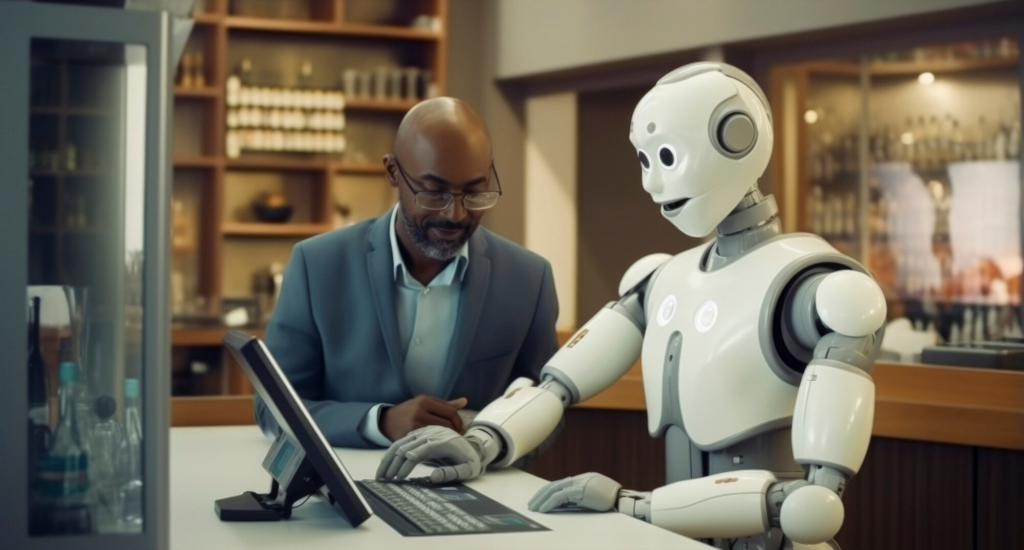
They can:
Advantages of Autonomous AI Agents
- Efficiency and Productivity: Autonomous AI agents can process tons of data really fast, allowing them to reach conclusions and execute tasks super efficiently. This not only speeds up operations but also boosts overall productivity. Plus, their high accuracy means fewer errors, leading to reliable and consistent results.
- Multitasking Capabilities: Using their computational power, autonomous AI agents are great at multitasking. They can handle multiple tasks at the same time, easily adapting to changing environments and requirements. This adaptability ensures they remain effective even as things change.
- Continuous Learning and Improvement: By integrating advanced technologies like Large Language Models (LLMs), these agents can continuously learn. They improve their performance based on interactions and feedback, getting smarter and better at their jobs.
- Real-Time Responsiveness: AI agents are remarkably responsive, processing input and generating output instantly. This real-time capability is crucial in applications like self-driving cars, where split-second decisions can prevent accidents and ensure safety.
- Decision-Making under Uncertainty: Autonomous AI agents are designed to operate effectively in uncertain and unpredictable situations. Even with incomplete information, they can use probabilistic models to make informed decisions and get the best possible outcomes.
However, autonomous AI agents also have limitations: Autonomous AI agents, while promising increased efficiency and automation, come with certain limitations and potential risks:
- Limited Understanding and Contextual Awareness: AI agents can struggle with tasks that need them to really understand things, read between the lines, or go beyond what they were initially programmed to do. They might misread subtle cues or not get the bigger picture, which could lead to mistakes or misunderstandings.
- Data Dependency and Bias: AI agents’ effectiveness depends heavily on the data they’re trained on. If the data’s biased or bad, the AI’s outcomes, predictions, and behavior can also be skewed, inaccurate, and discriminatory.
- Narrow Task Focus and Adaptability: Many AI agents are designed for specific tasks and might not adapt well to new or broader tasks. This specialization can limit their flexibility and ability to handle unexpected situations or changing requirements.
- Reliability and Security Concerns: AI agents can be unreliable and insecure. Malicious use, cyberattacks, and unforeseen errors can lead to unintended consequences, system failures, and potential harm.
- Lack of Common Sense and Ethical Reasoning: AI agents may not have common sense or ethical judgment, leading to actions that are technically correct but morally or socially unacceptable. They may struggle to navigate complex ethical dilemmas or understand the broader societal implications of their decisions.
Key Insight:
Autonomous AI agents have a ton of potential benefits, but we can’t ignore the risks that come with them. It’s important to find a balance between automation and human oversight. If we want AI to be used responsibly and effectively, we need to design it carefully, have strong ethical guidelines, and monitor it constantly. Research and development also need to keep going to address the limitations and unlock AI’s full potential while minimizing potential harm. Knowing what AI can and can’t do is super important for using it effectively and avoiding risks.
Applications of Autonomous AI Agents Across Industries
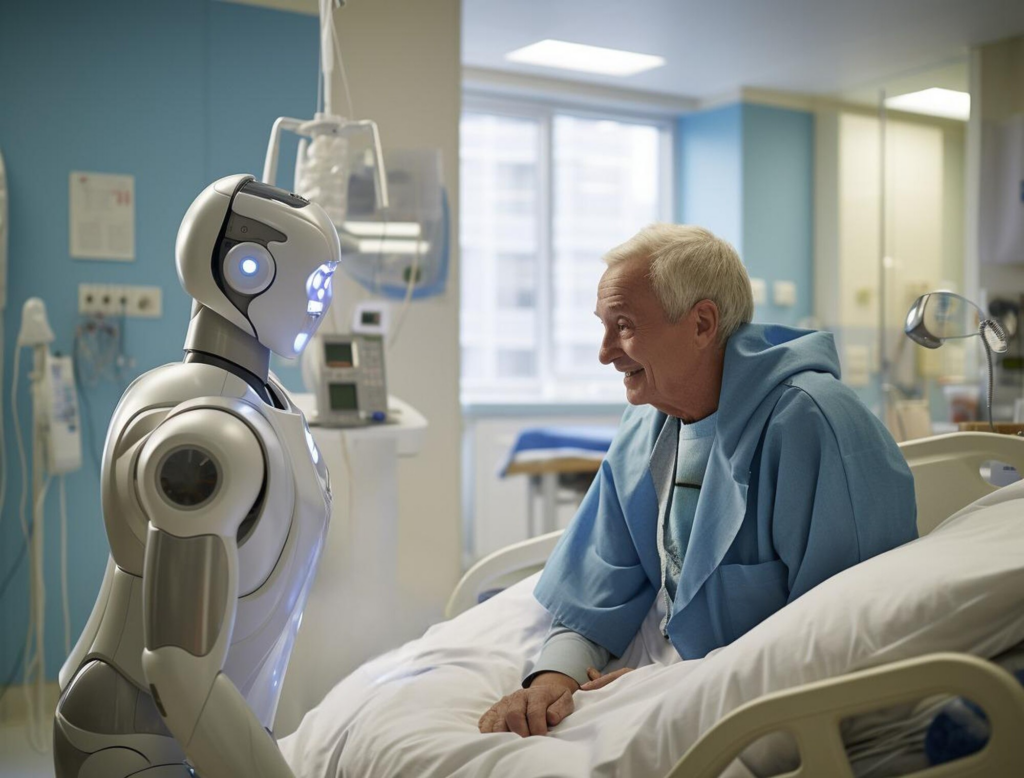
Healthcare:
- Remote Patient Monitoring: Wearable devices and sensors can keep an eye on patients’ vitals like heart rate, blood pressure, and glucose levels. The data is sent to healthcare providers, so they can catch any problems early and step in quickly. This helps keep patients out of the hospital and improves their overall health.
- Automated Diagnostics: AI algorithms can check out medical images like X-rays, MRIs, and CT scans to find patterns and anything unusual. This helps diagnose diseases like cancer, fractures, and neurological disorders faster and more accurately, which leads to better treatment outcomes.
- Personalized Treatment Plans: AI can create personalized treatment plans by analyzing patient data, including medical history, genetics, and lifestyle. This helps figure out the best medication, dosage, and therapy, so treatment is more effective and has fewer side effects.
- Virtual Health Assistants: AI-powered chatbots and virtual assistants can help patients 24/7 by answering questions, scheduling appointments, and giving basic medical advice. This makes healthcare information more accessible and takes some weight off healthcare providers.
- AI-Assisted Diagnosis: AI can look at tons of patient data, like electronic health records, lab results, and medical images, to help doctors make accurate diagnoses. This reduces diagnostic errors and keeps patients safer.
- Personalized Treatment Recommendations: AI can use patient data and medical research to give tailored treatment recommendations that consider individual patient needs and preferences. This leads to more effective and patient-centered care.
- Automated Hospital Operations: AI can take care of boring admin tasks like appointment scheduling, bed management, and billing, so healthcare staff can focus on patient care. This improves efficiency and cuts costs.

- Financial Robo-Advisors: AI-powered robo-advisors can give automated financial advice and manage portfolios for much less than traditional human advisors. This makes financial advice accessible to more people and can improve investment outcomes for individuals.
- Automated Risk Assessments and Fraud Detection: AI algorithms can analyze financial transactions and customer behavior to find patterns that might indicate fraud. This allows for real-time fraud detection and prevention, protecting financial institutions and consumers from losing money.
- Expense and Budget Management Support: AI-powered tools can track expenses, categorize transactions, and give insights into spending patterns, helping individuals and businesses manage their money better.
- Algorithmic Trading: AI algorithms can automatically execute trades based on market conditions and predefined strategies, potentially making trading faster and more efficient.
- Risk Assessment: AI can analyze financial data to assess and manage risks associated with investments, loans, and other financial products. This helps financial institutions make informed decisions and avoid potential losses.
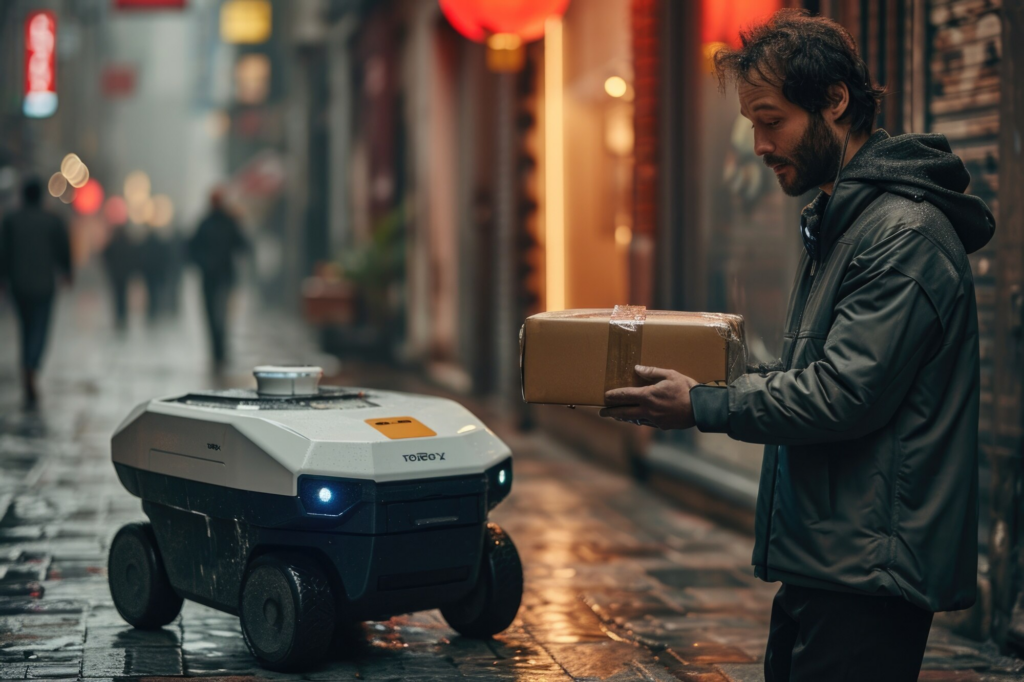
Transportation:
- Autonomous Vehicles: Self-driving cars and trucks could change transportation completely, making roads safer, reducing traffic jams, and making transportation more efficient.
- Smart Traffic Management Systems: AI algorithms can analyze traffic patterns and optimize traffic flow, reducing congestion and improving travel times.
- Route Optimization: AI can plan and optimize routes for delivery and logistics, reducing transportation costs and improving delivery times.

- Chatbots and Virtual Assistants: AI-powered chatbots and virtual assistants can handle customer questions, provide support, and resolve issues 24/7, making customers happier and reducing the workload on customer service agents.
- Personalized Customer Service: AI can analyze customer data to give personalized recommendations and offers, tailoring the customer experience to individual needs and preferences.
- Automated Customer Service Operations: AI can automate routine customer service tasks like order processing and complaint resolution, improving operational efficiency and reducing costs.
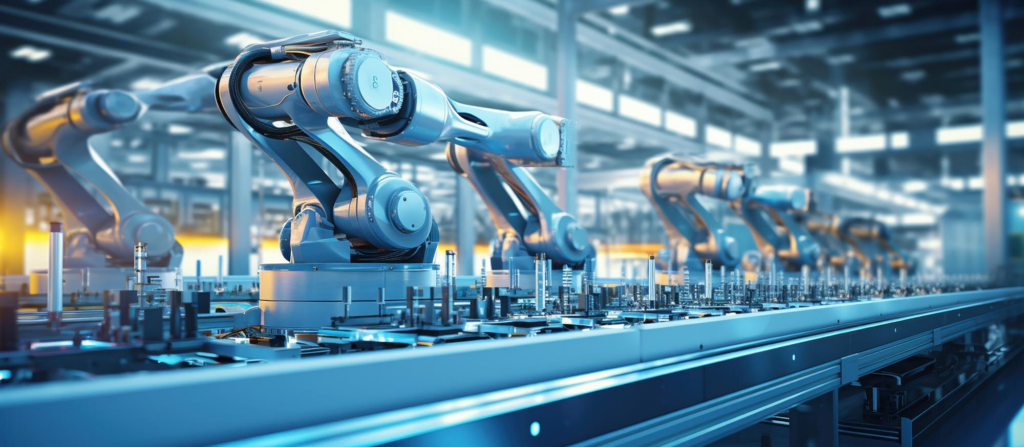
Manufacturing:
- Automated Production: AI-powered robots and machines can perform manufacturing tasks with precision and efficiency, improving productivity and reducing labor costs.
- Predictive Maintenance: AI algorithms can analyze sensor data from machines to predict when they might fail or need maintenance, enabling proactive maintenance and minimizing downtime.
- Quality Control: AI-powered vision systems can inspect products for defects with high accuracy and speed, improving product quality and reducing waste.
- Production Optimization: AI can analyze production data to identify bottlenecks and inefficiencies, enabling manufacturers to optimize production processes and improve resource utilization.
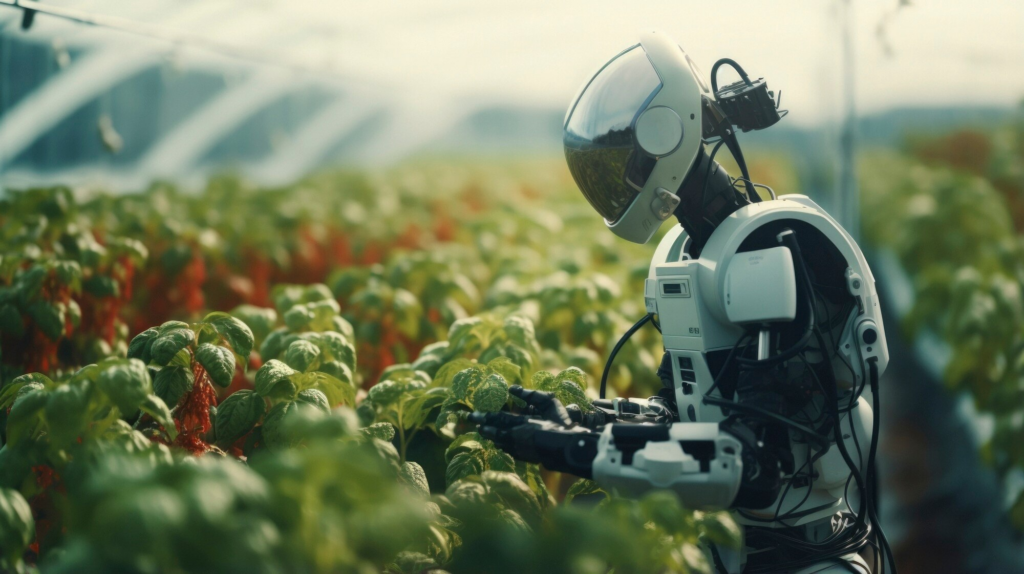
Agriculture:
- Crop Monitoring and Management: AI-powered drones and sensors can monitor crop health, soil conditions, and weather patterns, enabling farmers to make data-driven decisions about irrigation, fertilization, and pest control.
- Pest and Disease Identification: AI algorithms can analyze images of crops to identify signs of pests and diseases, enabling early detection and targeted intervention.
- Automated Weeding, Planting, and Harvesting: AI-powered robots can perform agricultural tasks with precision and efficiency, reducing labor costs and improving crop yields.
Autonomous AI Agents in Web3:
Web3 applications are being totally transformed by the combination of autonomous AI agents and blockchain technology, which is also changing the way we think about decentralized systems and operations.
Decentralized Autonomous Organizations (DAOs), for example, are going to be significantly affected. By using AI agents, DAOs can automate things like resource management, decision-making, and task execution in a truly decentralized way, getting rid of the need for a central authority. This could completely change traditional organizational structures and governance models.
Smart contracts, a key part of blockchain applications, can also be improved through AI integration. AI agents can enable smart contracts to dynamically adapt to real-time market changes and evolving conditions, making decentralized applications more efficient and responsive. This could lead to the creation of more sophisticated and adaptable decentralized financial instruments and applications.
In the world of cryptocurrency, AI agents can be used to provide personalized investment solutions. By analyzing tons of market data, assessing risk factors, and understanding individual investor preferences, AI agents can offer tailored investment strategies and recommendations. This could give everyone access to sophisticated financial advice and investment management tools.
Overall, the convergence of AI and blockchain technologies has huge potential to reshape the Web3 landscape. By automating processes, improving decision-making, and enabling dynamic adaptation, AI agents can unlock new levels of efficiency, transparency, and accessibility in decentralized applications. As these technologies continue to mature and converge, we can expect to see a bunch of innovative Web3 applications that leverage the combined power of AI and blockchain to create a more decentralized, autonomous, and intelligent digital future.
Ethical Considerations Surrounding Autonomous AI Agents
The growing independence of AI agents brings up some serious ethical issues that we need to think about:
- Lack of Human Oversight:
AI agents might act without human supervision and cause unintended harm or make bad decisions. For example, in retail, they could automatically change products without customer approval, which could hurt the brand’s reputation and customer service. - Bias and Discrimination:
AI systems can learn biases from their training data, which can lead to unfair or discriminatory outcomes in important areas like hiring, lending, criminal justice, and resource allocation. - Data Privacy and Security:
Autonomous agents need tons of data to work, which raises concerns about data privacy, ownership, and control. Users often don’t know how their data is being used by these systems, which can lead to privacy violations and misuse. - Accountability and Responsibility:
When AI agents mess up and cause harm, it can be hard to figure out who’s responsible. We need to establish clear lines of accountability and responsibility for their actions. - Transparency and Explainability:
AI systems need to be transparent and explainable so that users can understand how they make decisions and hold them accountable. This is especially important in areas like healthcare and finance, where AI agents’ decisions can have huge consequences. - Key Insight: Dealing with these ethical issues requires a team effort from technologists, policymakers, ethicists, and society as a whole. Open discussions and collaboration are key to ensuring that AI agents are developed and used responsibly to benefit society and minimize potential harm.
The Future of Autonomous AI Agents
The future of autonomous AI agents is looking really bright, thanks to all the progress happening in AI and robotics. These advancements are making it possible to build super smart and capable systems that could totally change lots of industries and how we live our everyday lives. There are some key trends shaping the future of these AI agents, and it looks like AI is going to play an even bigger role in our lives going forward.
Increased Agency and Autonomy:
AI agents are getting super smart these days! They’re becoming more independent and can make their own decisions. This means they can adapt to new situations and unexpected problems without needing much help from humans. Using advanced algorithms and machine learning, these agents can figure out complex situations, predict what might happen, and make smart choices instantly. This increased independence can make processes smoother, use resources better, and let AI systems handle difficult tasks that only humans could do before.
Enhanced Cognitive Abilities:
Agentic AI is giving machines super smart brains, letting them see, think, and understand the world in a crazy advanced way. This means they can handle tons of data, spot patterns, and get useful insights. By copying how humans think, these agents can solve tricky problems, come up with new ideas, and be smart in a way we used to think only humans could be. This brainpower opens up tons of possibilities in areas like science research, figuring out medical stuff, and money analysis.
Natural Language Communication:
With the advancements in natural language processing and large language models (LLMs), AI agents can now communicate with humans just like we do! This means we can easily tell AI systems what we want or need, and they’ll get it. Plus, these agents understand the context and nuances of language, so they can respond in a way that makes sense. This improved communication makes it easier for humans and AI to work together, share knowledge, and ultimately make AI systems super helpful in our everyday lives.
Collaboration with Humans:
AI agents are being designed to work more and more with humans to enhance human skills and expertise. This collaboration can lead to better results and higher productivity by using the strengths of both humans and AI. AI agents can take over repetitive tasks, analyze large amounts of data, and give useful insights, while humans can focus on creative problem-solving, strategic decision-making, and tasks that require emotional intelligence and empathy. This teamwork can change industries, make workplaces more efficient, and create new opportunities for humans and AI to work together.
Wider Industry Adoption:
Autonomous AI agents are changing the game in a bunch of industries. From healthcare and finance to transportation and manufacturing, these agents are automating stuff, making operations better, and driving innovation. Think about it: in healthcare, AI-powered robots could help with surgeries, diagnose diseases, and give personalized patient care. In finance, AI algorithms can analyze market trends, find fraud, and give investment recommendations. And in transportation, self-driving cars could totally change how we get around and make accidents less common. As AI technology gets better, more and more industries will use it, leading to things being done better and safer, and new ways of doing business.
Key Insight: Workforce and Societal Impact
AI is getting smarter and more independent, and that’s a big deal for workers and society. Sure, it can boost productivity, make things more efficient, and take over boring tasks, but there’s also the worry about job losses, the need for new skills, and a bigger gap between the rich and the poor. We need to tackle these issues head-on and make sure we move smoothly into a future where humans and AI can work together effectively. This might mean investing in education and training programs, encouraging lifelong learning, and creating policies that help workers adapt to the changing job market.
In short, the future of AI is looking good. As AI becomes more common, it’s going to play a bigger role in our everyday lives and work. By automating tasks, lending a hand, and driving innovation in different areas, AI has the power to change industries, make us better at what we do, and create a future where humans and AI systems team up to achieve shared goals. But, we also need to be aware of the potential challenges and make sure that everyone benefits from AI while minimizing any negative impacts on society.
Real-World Examples of Autonomous AI Agents
There are tons of real-world examples that show how awesome and powerful autonomous AI agents can be:
- Self-driving cars: Companies like Waymo and Tesla are working on cars that can drive themselves and navigate through traffic.
- AI chatbots: Loads of businesses use chatbots to handle customer questions and support, which automates customer service.
- Healthcare AI agents: AI agents are being used to diagnose medical conditions, analyze medical images, and create personalized treatment plans.
- Fraud detection AI agents: Financial institutions use AI agents to detect and prevent fraudulent activities in real-time.
- Smart home devices: Devices like Amazon Alexa and Google Home use AI agents to control home appliances, give you information, and help with everyday tasks.
- Robots in manufacturing: Robots with AI agents are used in manufacturing for tasks like assembly, welding, and painting, which makes things more efficient and precise.
These examples show how versatile autonomous AI agents are and how they can change tons of industries.
FAQ
What are autonomous AI agents?
- AI systems that can perform tasks without human help.
What are the main types of autonomous AI agents?
- Reactive, deliberative, and hybrid.
What are the key capabilities of autonomous AI agents?
- They can perceive their environment, make decisions, and take actions.
What is the difference between autonomous AI agents and foundation models?
- Autonomous agents can operate independently, while foundation models need more guidance.
What are some of the ethical considerations surrounding autonomous AI agents?
- Bias, transparency, and accountability.
What are some of the real-world examples of autonomous AI agents?
- Self-driving cars and customer service chatbots.
How can AI agents be used in healthcare?
- To diagnose diseases and monitor patients.
What are the potential benefits of using AI agents in finance?
- To detect fraud and automate trading.
How can AI agents impact the workforce and society?
- They can automate jobs and improve efficiency.
What are some of the future trends in the development of autonomous AI agents?
- Increased capabilities and wider adoption.
Conclusion
Autonomous AI agents are a big step forward in artificial intelligence and could change a lot of industries and how we live. They can do tasks on their own, adapt to new environments, and make decisions with little human help, which opens up lots of possibilities. Even though there are challenges and ethical issues to think about, the future of autonomous AI agents is looking good, with ongoing research and development leading to even smarter and more capable systems. As these agents become more common, they’ll probably play a bigger role in shaping the future of technology and society. We encourage readers to learn more about this exciting field and explore how autonomous AI agents could impact their own areas.

